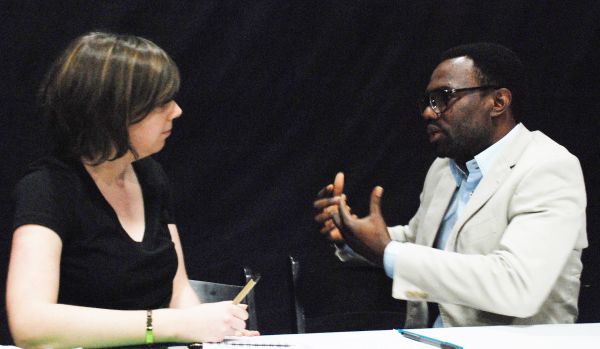Impact in Profile
I recently emailed a teacher to ask if he was willing to be featured in a profile story on the USC Shoah Foundation website about his experiences using IWitness in his classroom. I had never been introduced to him and he had not been expecting to hear from me.
When he responded later that night, “very much honored” by my request and sincerely thanking me for getting in touch, I was pleased but not surprised. After writing 120 profiles over the past year of students, researchers, scholars, staff, interns and countless others whose work intersects with the USC Shoah Foundation and its Visual History Archive, I’ve come to expect such enthusiasm and willingness to help from nearly every person I meet.

Often, I profile students who are interning at the USC Shoah Foundation or conducting research for their thesis or dissertation. These young people are often hearing from Holocaust survivors for the first time, and watching testimony motivates them to find out why genocides occur and what can be done to stop them.
Other profile subjects are scholars and professionals who use testimony in their work. Some have made films or written books about genocide, and drew on testimony in the Visual History Archive for their research. For them, the Visual History Archive is not only a collection of life stories; as experts in their field, they appreciate how valuable a resource it is for preserving history and discovering experiences that would not otherwise be known.
And, of course, there are the teachers. No matter where they live or what subject they teach, every single one marvels at the impact testimony has on their students – how it allows students to connect to history in a totally unique way and inspires them to make the world a better place.
I feel privileged to share the stories of the people who are using the Visual History Archive exactly as its creators and the survivors who gave testimony dreamed they would 20 years ago. Now that USC Shoah Foundation’s work has shifted from primarily collecting testimony to using the testimonies for education and research, it is critical that its impact on real people is communicated to the world.
With each profile of someone who can’t say enough about how much the USC Shoah Foundation means to them, the power of testimony becomes more and more clear. Hopefully, their stories have already begun to inspire others to discover the Visual History Archive for themselves. When they do, I’ll be ready to write.
